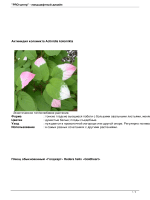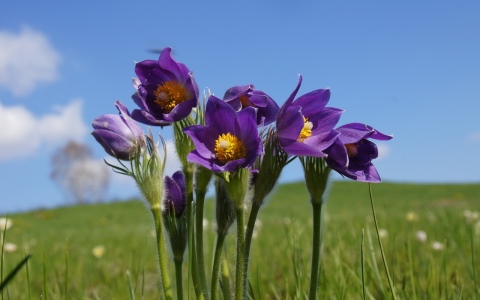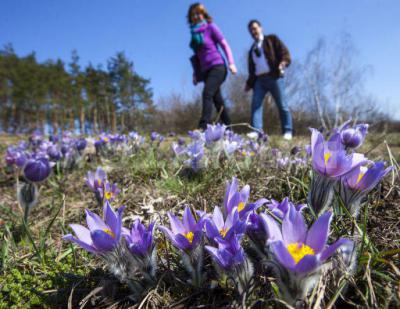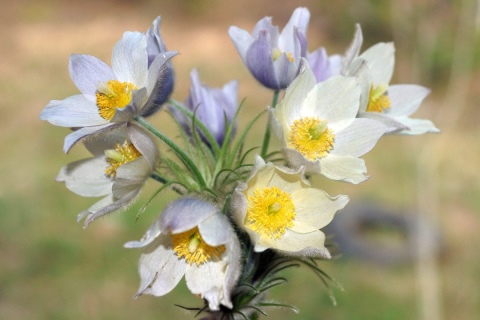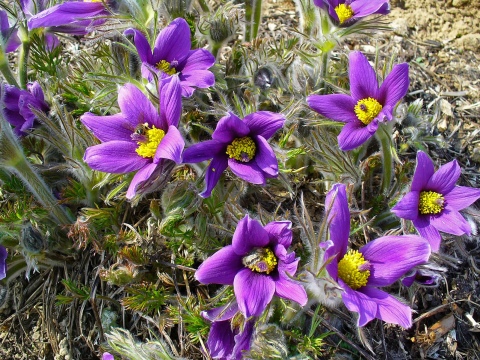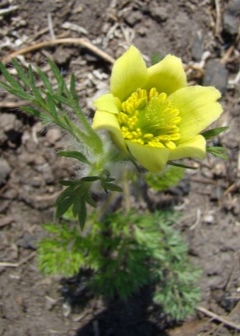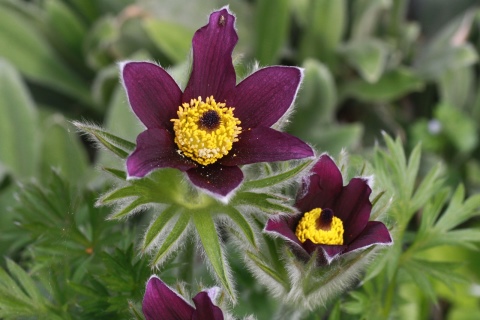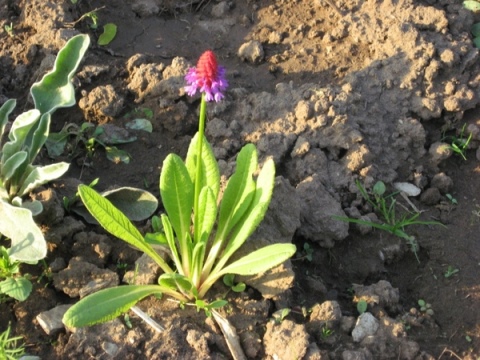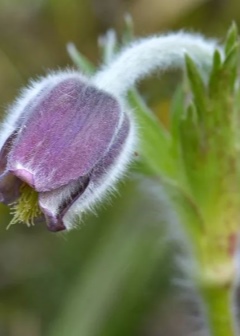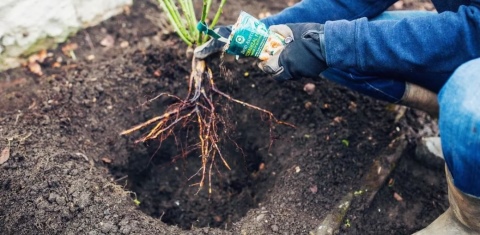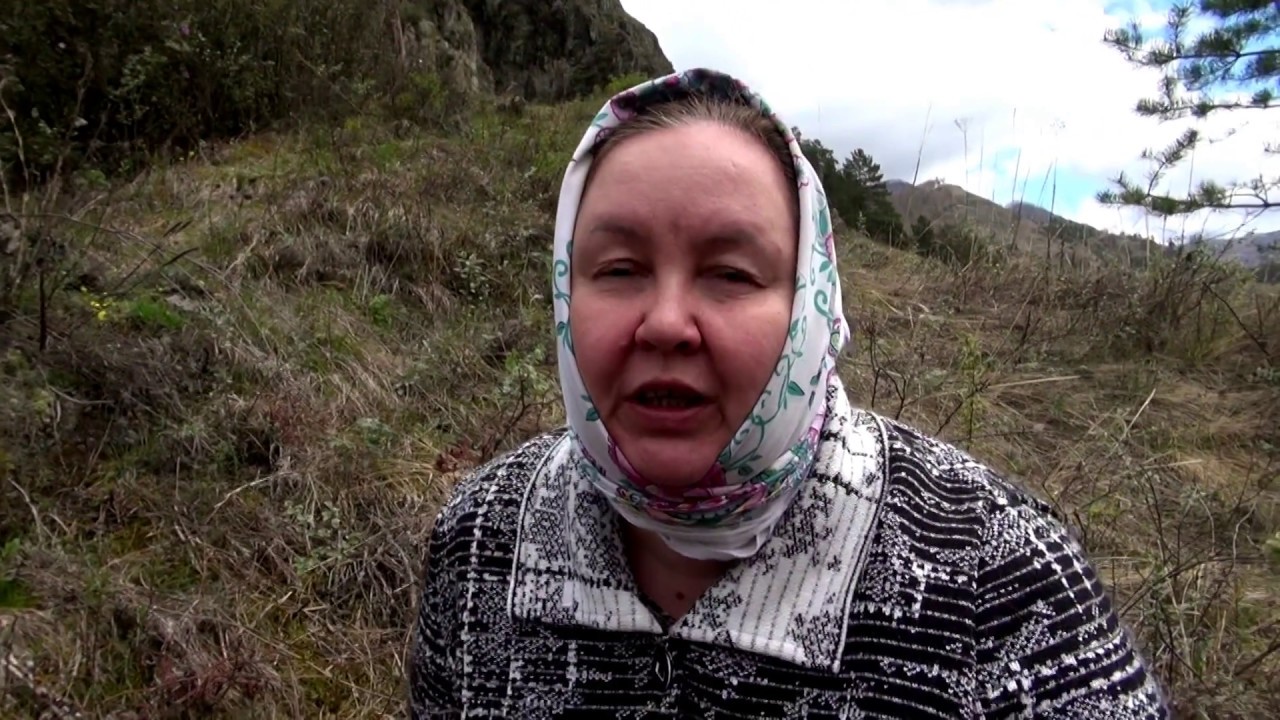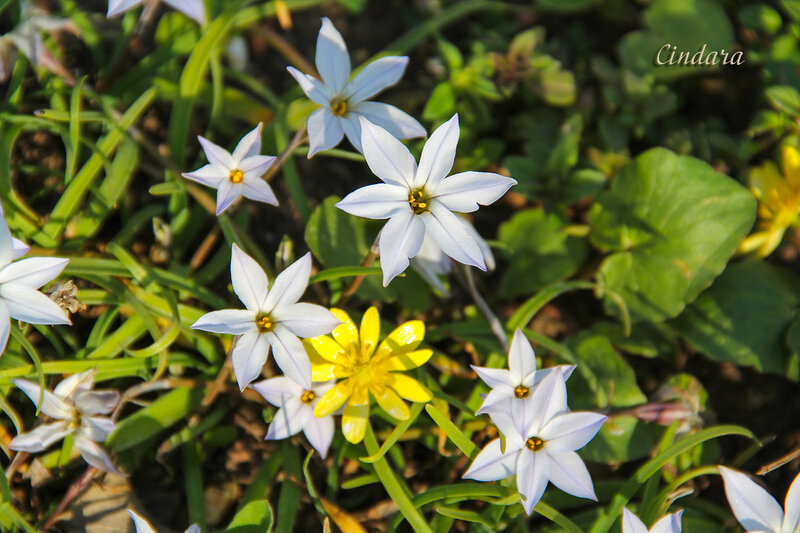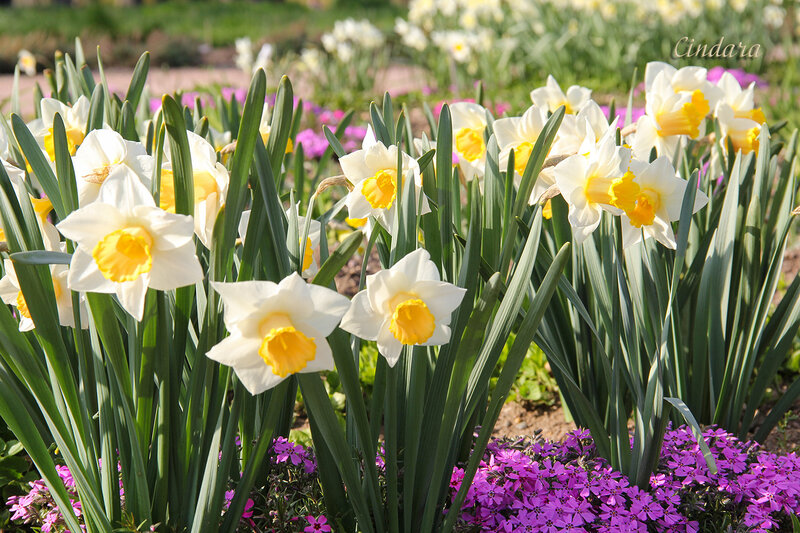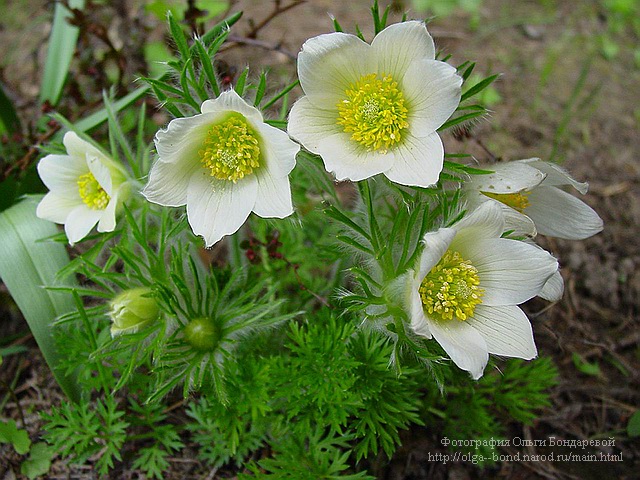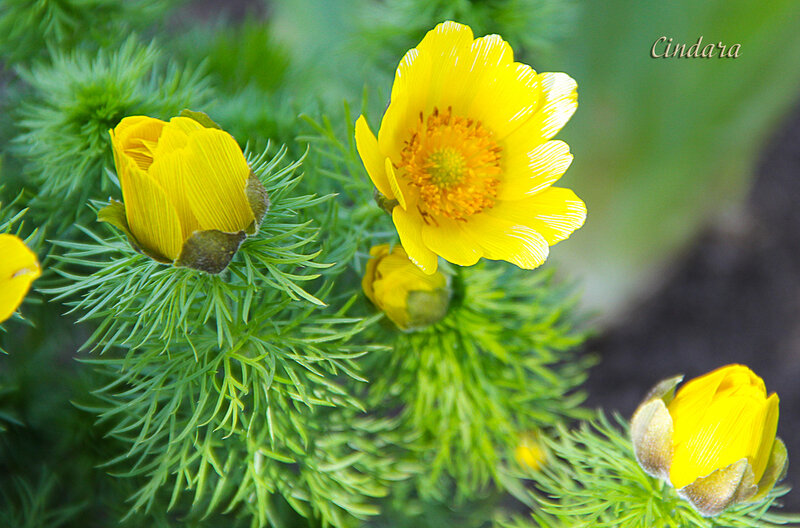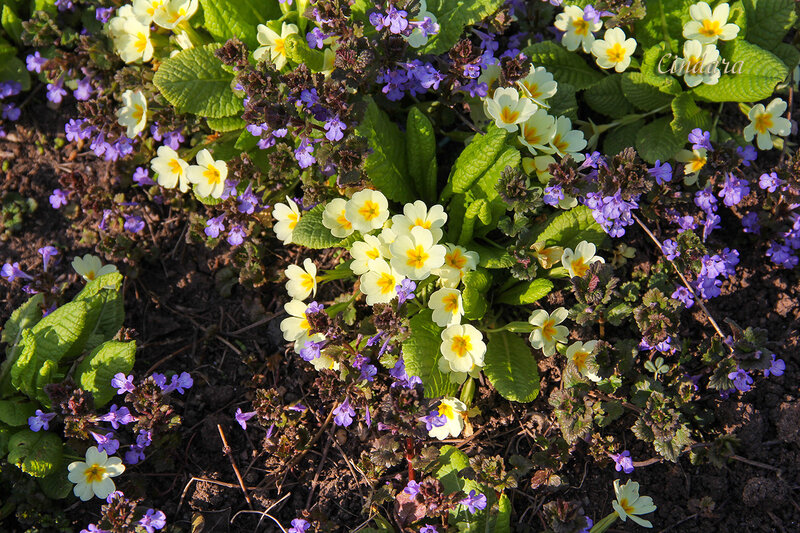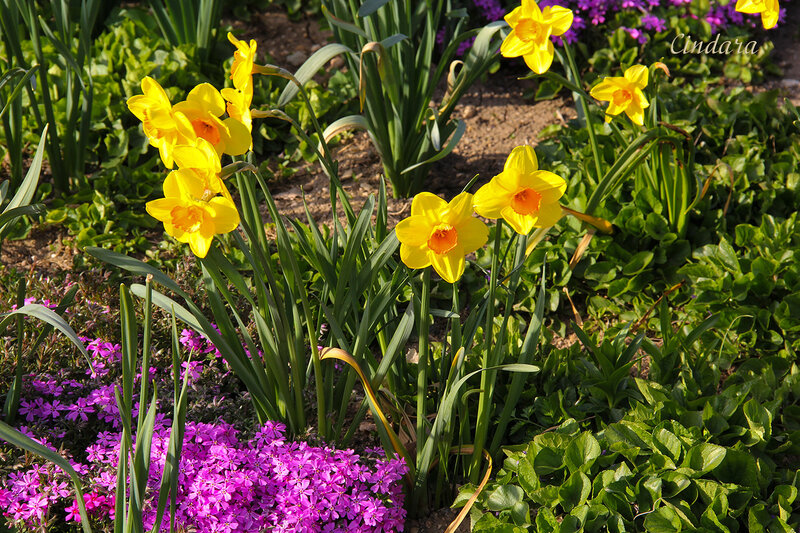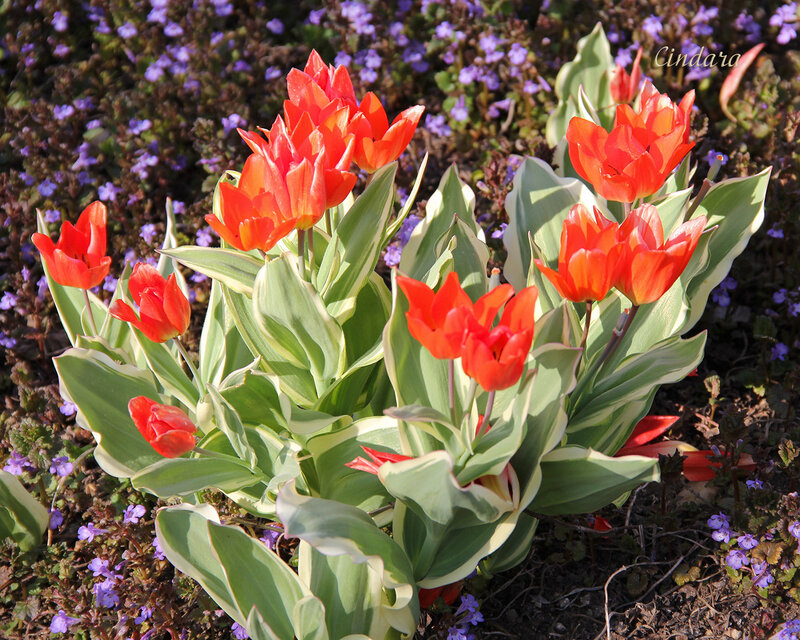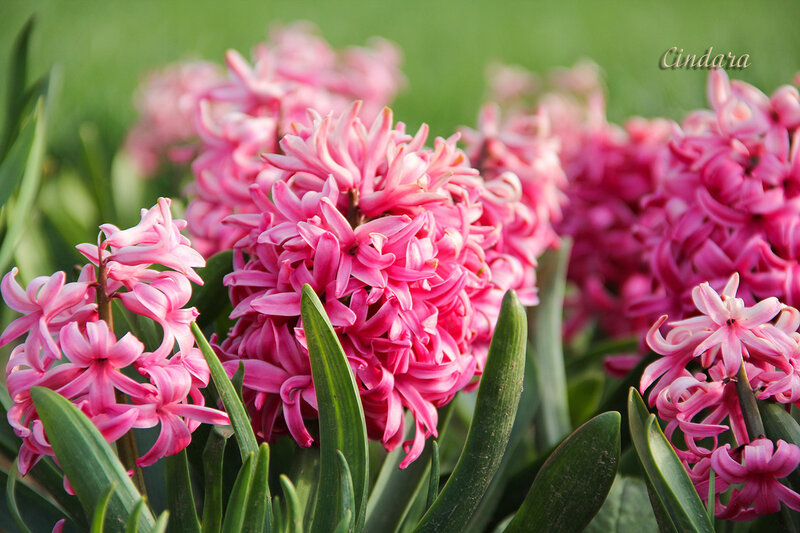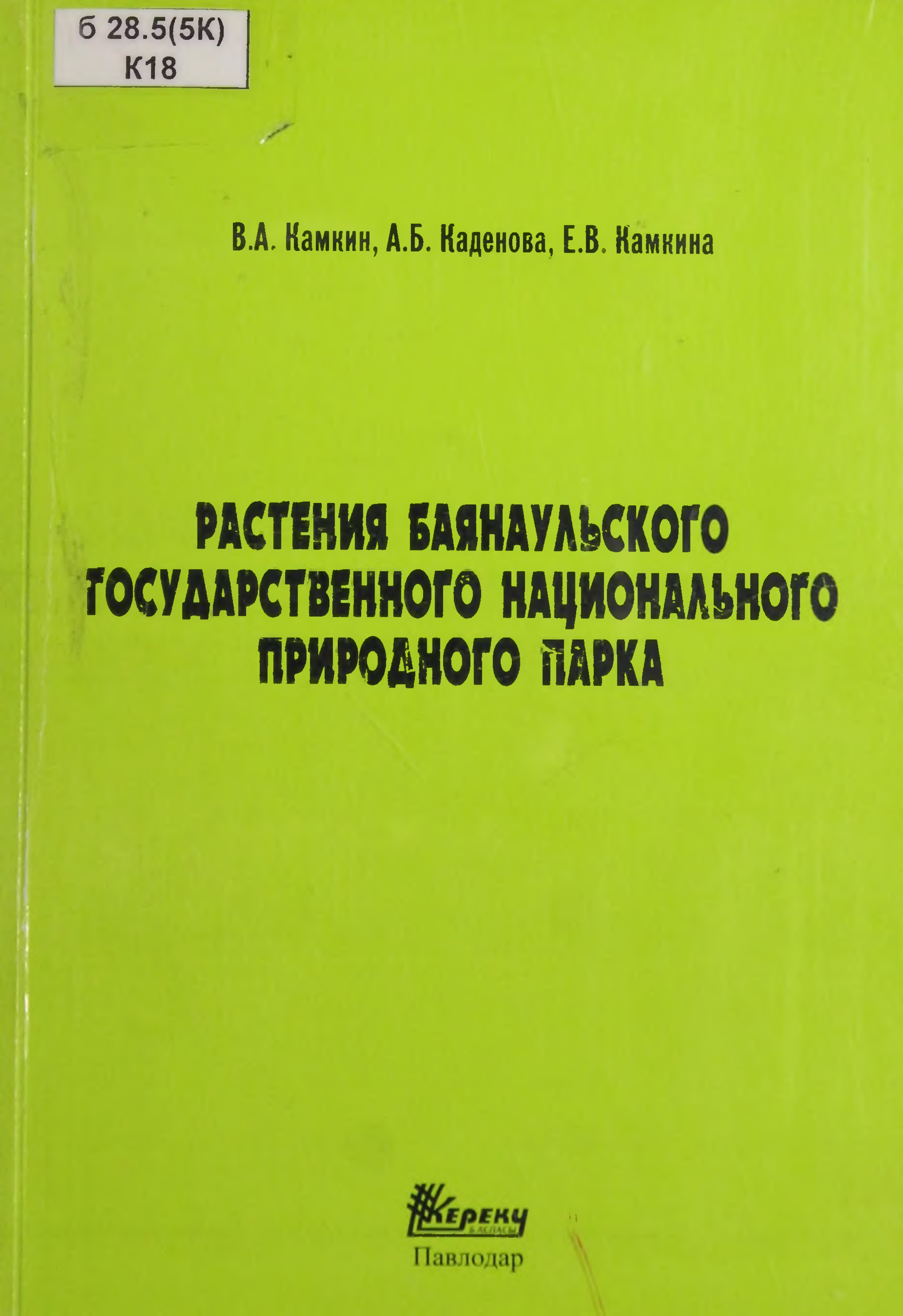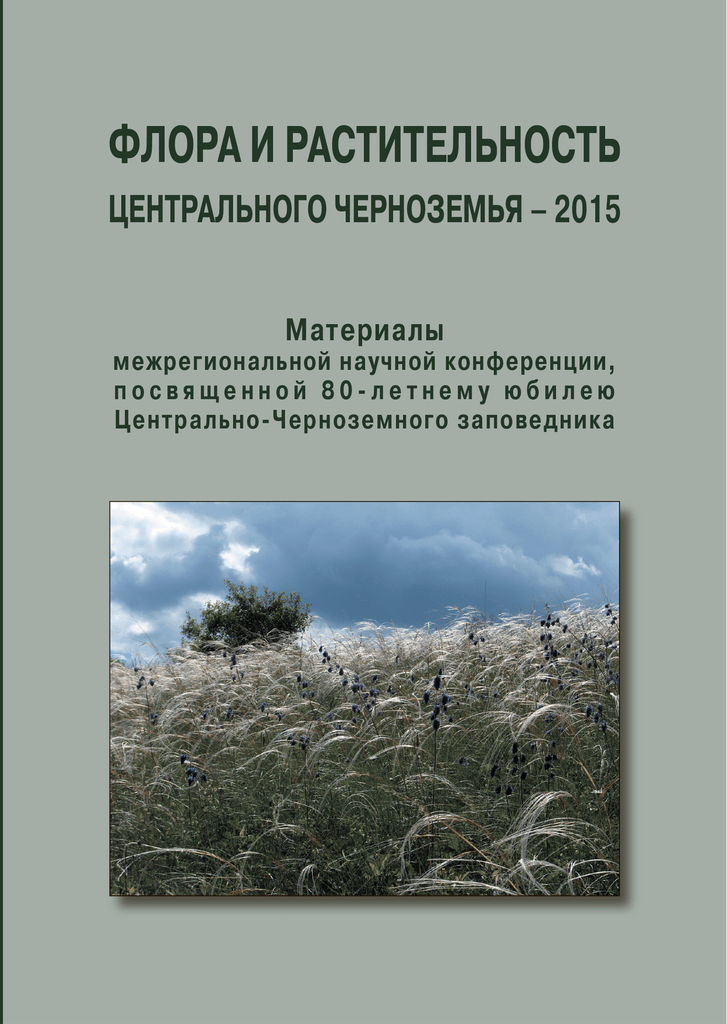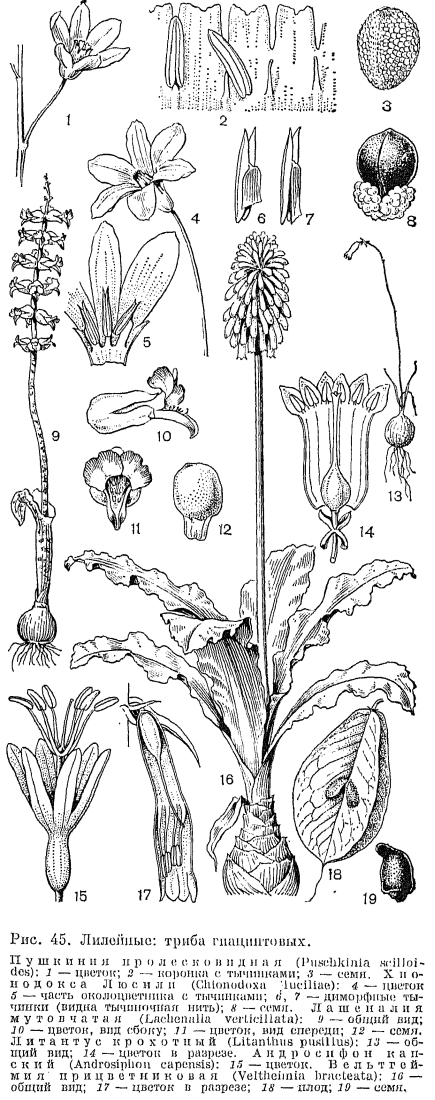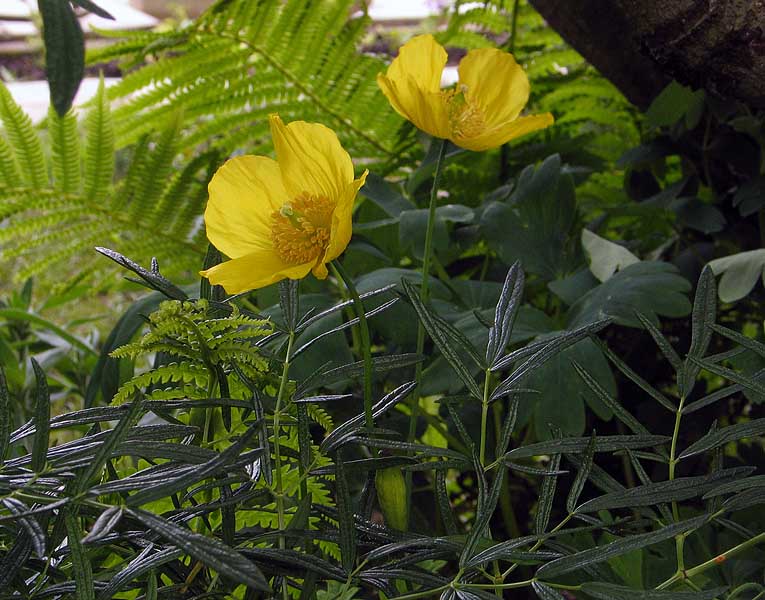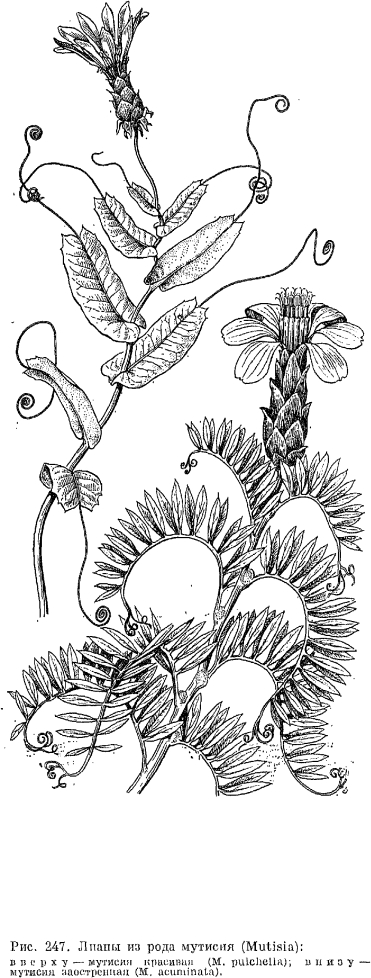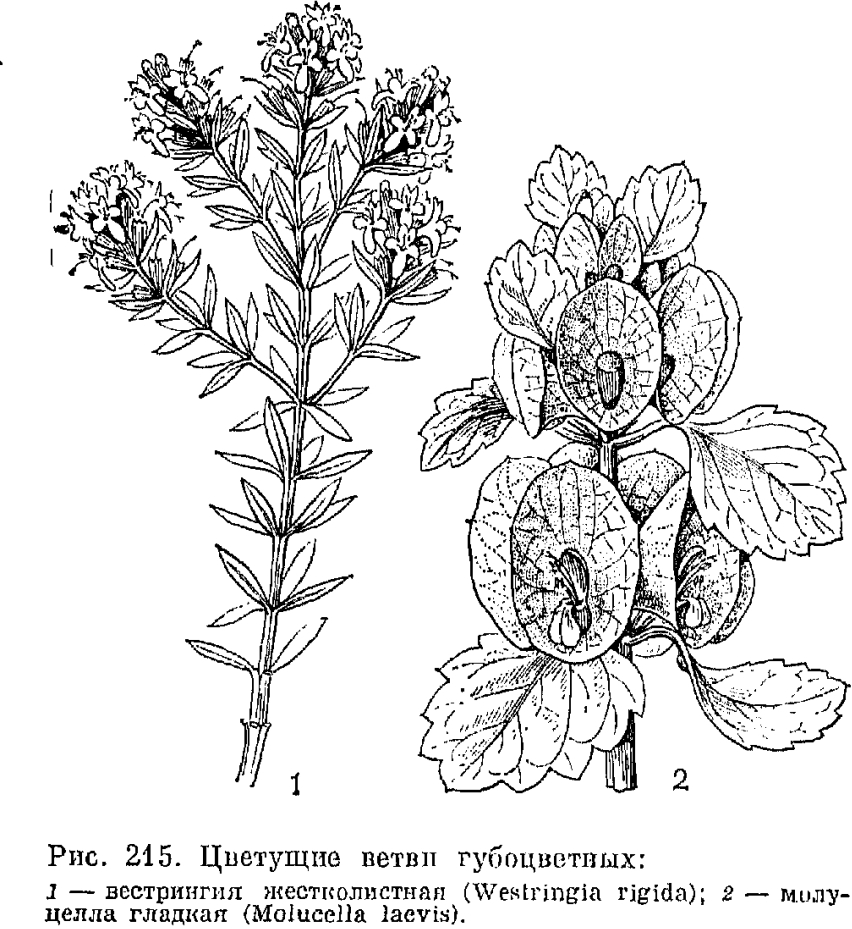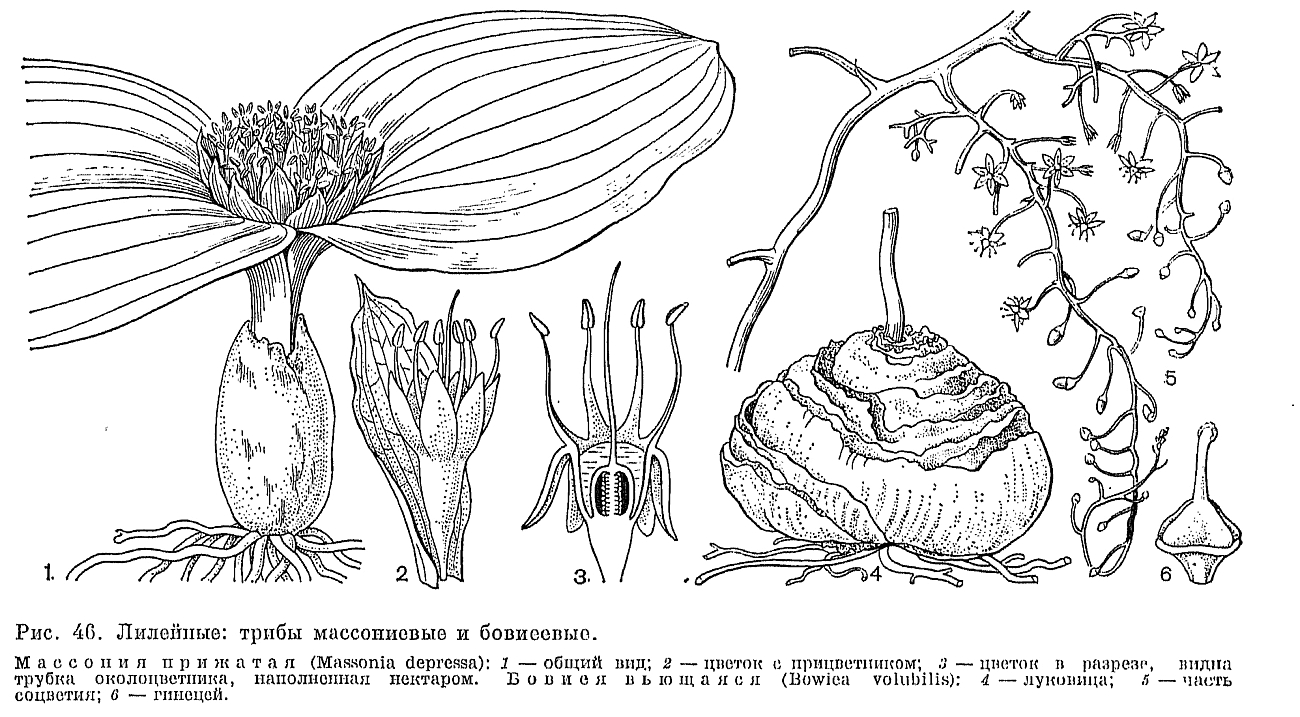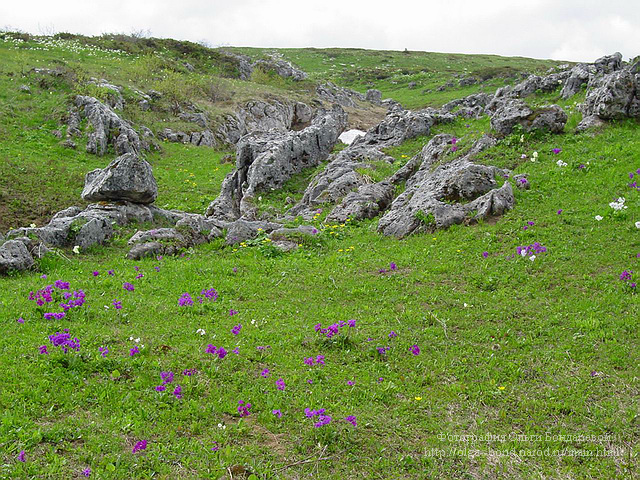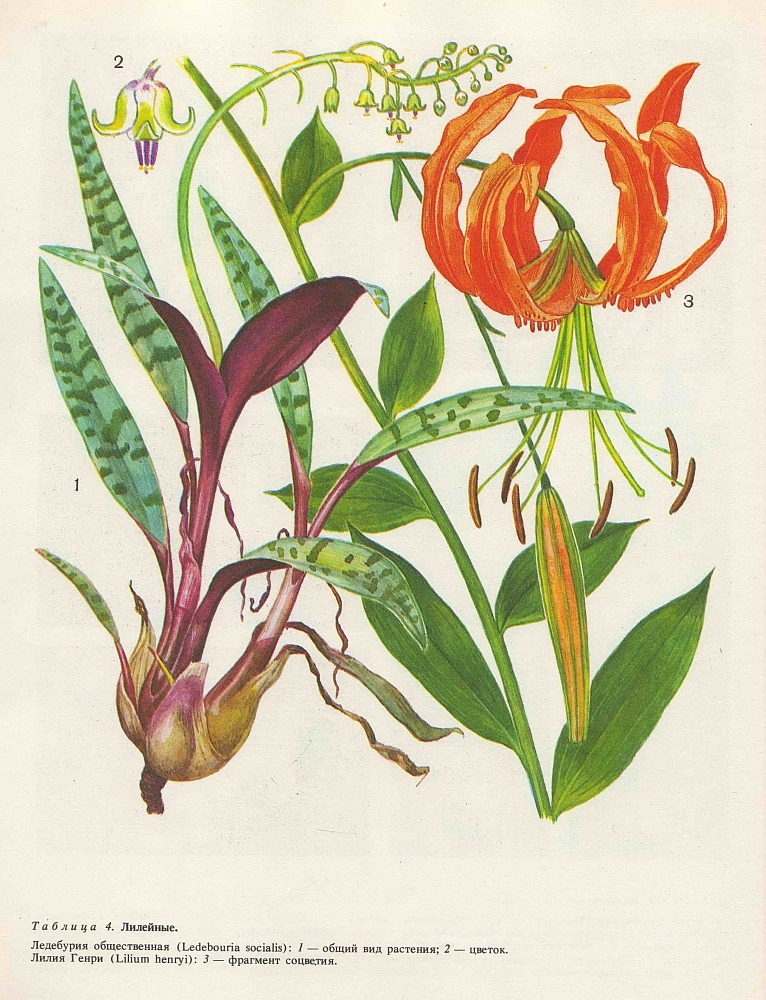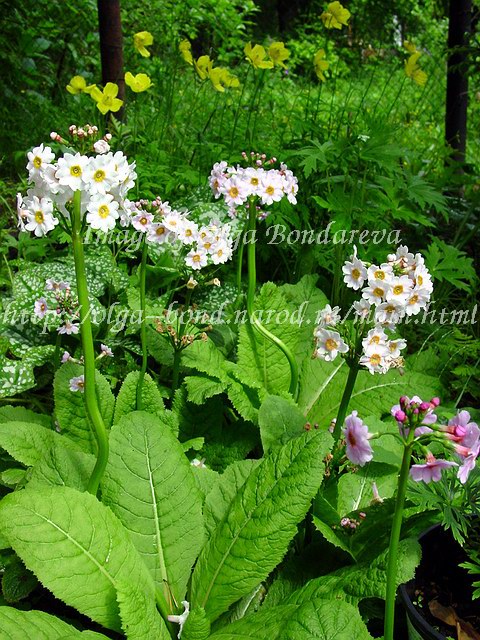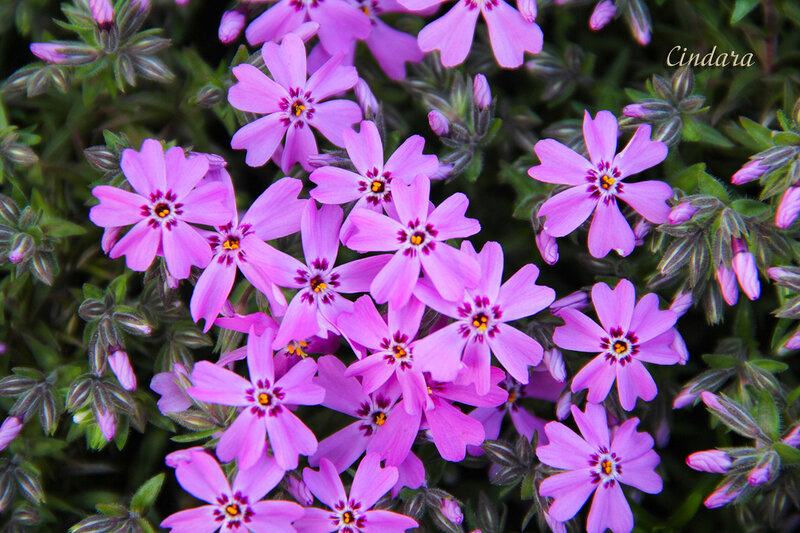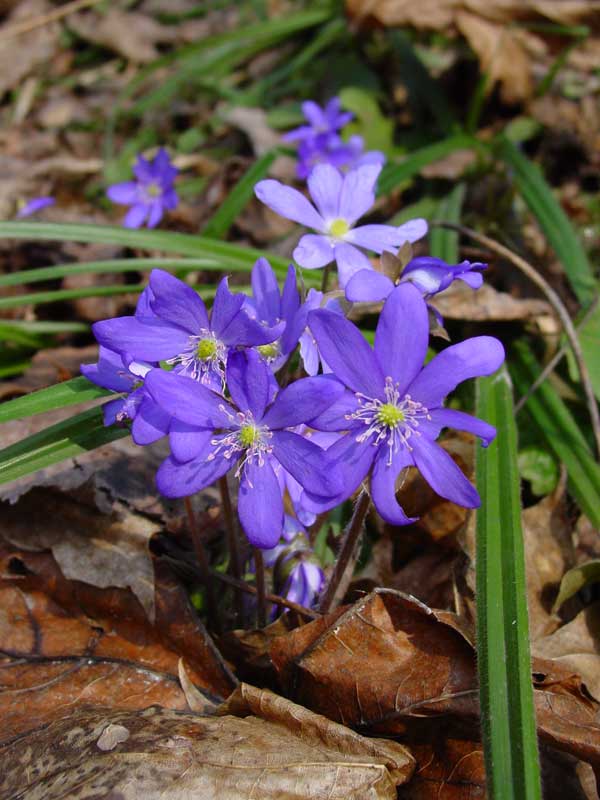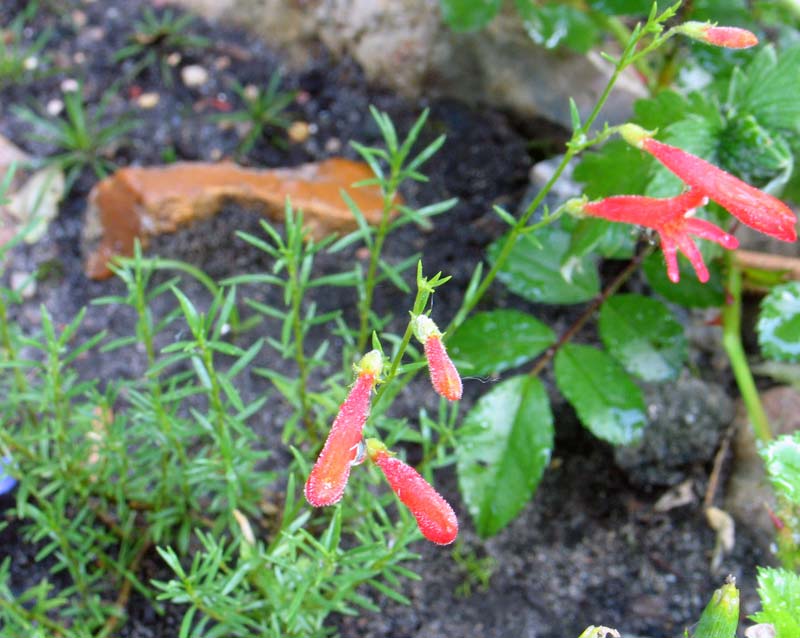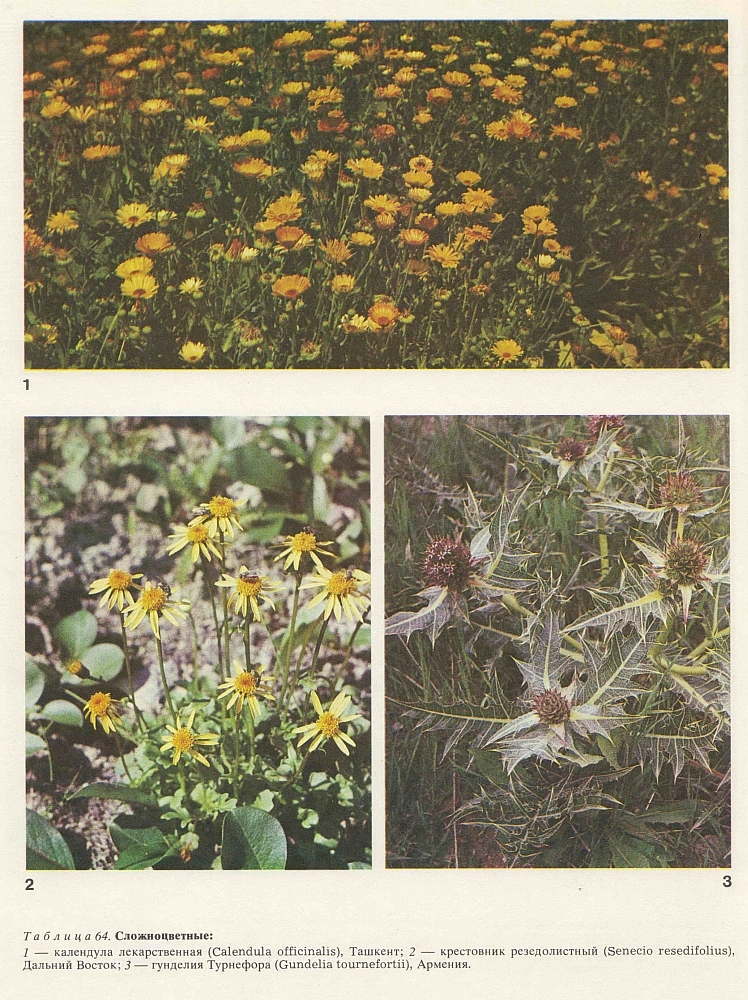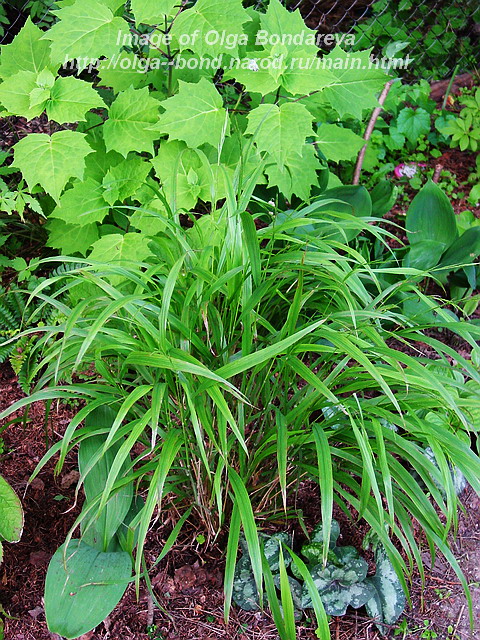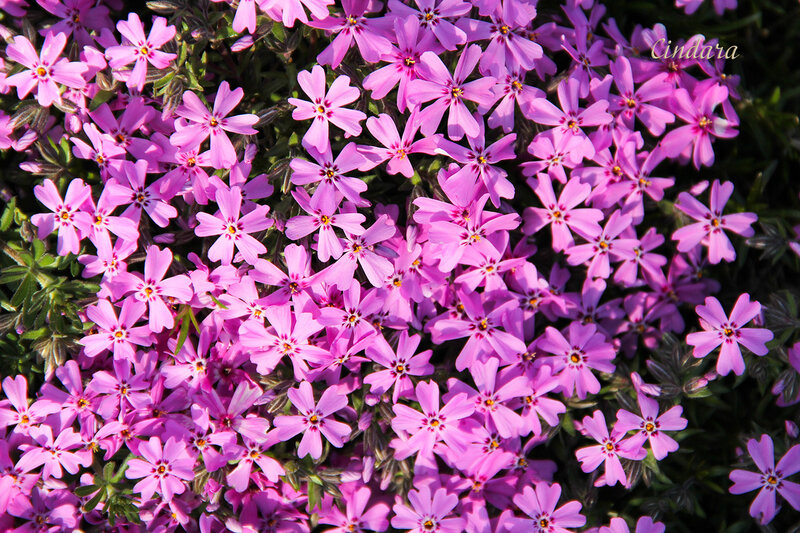Features of the open lumbago
In which regions can you find lumbago? Is picking herbs allowed? What are the main indications and contraindications for use?
Growing area
Opened lumbago, or sleep-grass, is found in Europe, especially in the middle lane and southern regions. But it can also be seen in Northern Europe - Sweden and Finland. It also grows in Siberia, Kazakhstan, Mongolia, China, the Far East, and North America. Loves dry pine and mixed forests, open meadows and edges, sunny slopes, meadows and steppes.
Botanical characteristic
- Perennial herb.
- The stem is erect, covered with thick soft hairs.
- At the end of the stem there is a large bell-shaped flower of light purple color.
- The flower has numerous yellow anthers (upper part of the stamen).
- Leaves are silvery, heavily pubescent, dissected.
- Blooms in March-May, depending on the area.
- Propagated by seeds only.
Is it possible to collect grass
The herb is listed in the Red Book of Russia. In particular, the collection of the plant is prohibited in the Moscow, Ryazan, Lipetsk, Oryol, Tula, Kaluga regions. In some regions, lumbago is becoming a rare plant. Refers to a shrinking, vulnerable species. For example, at the end of the 19th century, there were sixteen flower populations, today there are only nine. What is the reason for the extinction of the grass? Collection for bouquets, mass harvesting as medicinal raw materials, overgrowing of plant areas with dense grass.
You can grow a dream-grass in your personal plot both as a beautiful decorative flower and as a medicinal raw material. For medicinal purposes, the entire aboveground part is used. Experienced herbalists do not recommend making any home remedies with fresh herbs. Fresh stems, leaves and flowers contain protoanemonin, a poisonous substance. During drying, after about 3-4 months, it evaporates. But the raw material does not lose its medicinal properties, it becomes less toxic.
Healing action
The healing properties of the sleep-herb:
- pain reliever;
- astringent;
- sedative;
- relaxing;
- hypnotic;
- anti-inflammatory;
- bactericidal;
- diuretic;
- choleretic;
- expectorant;
- enveloping;
- wound healing.
In chemical composition:
- saponins;
- coumarins;
- volatile substances (anemonin);
- camphor;
- tannins.
List of indications
What does sleep-herb help from? Under what diagnoses is it recommended to take the herb?
- Functional disorders of the nervous system. Main indications: migraine, agitation, insomnia, irritability, hysteria, headache. Also, the herb improves the emotional state, improves mood, relieves attacks of melancholy and depression.
- Respiratory system. Opened lumbago gives an antispasmodic and expectorant effect. It is prescribed for coughing (bronchitis, bronchial asthma, whooping cough).
- Women's health benefits. The herb has a pronounced sedative effect, helps to calmly survive the premenopausal period. Eases the signs of PMS. It especially helps with spastic pain in the lower abdomen, headache, unstable emotional state, tearfulness, irritability. In ancient herbalists it is described that before the lumbago was given to women to stimulate childbirth, as well as to relieve pain.
- The cardiovascular system. Less commonly, it is mentioned that the lumbago plant is beneficial for disorders of the heart, stimulates cardiac activity, relieves vascular spasms, and lowers blood pressure.
- External use. You can use rubbing for joint diseases (rheumatism, gout, arthritis), treat wounds, eczema, fungal skin lesions, burns with strong infusions.The herb acts as an anesthetic and antiseptic.
Some sources indicate that lumbago herb helps with cataracts and glaucoma caused by increased intraocular pressure. There is also information that the plant has anti-tumor properties, helps with cancer. It is also taken for benign prostate tumors in men.
What are the contraindications for lumbago? It is forbidden to take with inflammation of the digestive tract and kidneys, pregnant women (can provoke abortion), children. Fresh grass can cause severe allergies, burns in contact with skin and mucous membranes. In case of an overdose and prolonged use, anemonin poisoning is possible, as well as disorders of the nervous and digestive systems. You cannot take medicine without consulting a doctor.
Reproduction lumbago
Propagated by such perennials as lumbago seeds or seedlings. It is unrealistic to transplant an adult plant - its root is long, when digging it will be damaged and the bush will die. Seeds are sown in the fall, the box is taken out into the garden with the onset of winter and hidden under the snow. The best result is given by seeds planted in spring - for seedlings in early spring, and in open ground - in the last spring month.
 The most convenient way to grow lumbago from seeds
The most convenient way to grow lumbago from seeds
To plant seeds on a garden bed, it is first treated with a fungicide, and the seeds themselves are treated with a growth stimulant, then:
- shallow furrows are made;
- sow seeds;
- sprinkle with a small amount of sand or soil;
- moisturize;
- covered with a film, which is periodically raised for airing.
For growing seedlings, seeds are sown in containers with a substrate in the form of a loose soil mixture. In this case, one should take into account such a feature as a prolonged germination period - the first shoots may appear after 2 weeks, and the last ones after a month and a half. All this time, the soil is moderately watered, protected from direct ultraviolet radiation. After the seedlings have 2 leaves, they are dived into deep pots with a diameter of 60 to 80 mm. Small plants are systematically watered, maintained, with a balanced fertilization every 2 weeks.
 Germinate seeds indoors to plant mature seedlings outdoors
Germinate seeds indoors to plant mature seedlings outdoors
If the seedlings are strong enough, then they can be planted in the garden in August or September. They also act in a different way:
- leave seedlings in pots;
- small trenches are dug at the end of autumn;
- pots are placed in the recesses;
- insulate the sides with soil or peat, and the top with spruce branches.
When breeding an ordinary lumbago, you will see its flowers as early as the 2nd year, and when growing varieties that live in the mountains, you will have to wait several years for flowering.
Advice
If the seedlings did not shed the seed coat on their own, help them - by sprinkling with water 3 times and softening, carefully remove it with tweezers.
Medicinal properties and application
The meadow lumbago grass was considered magical. Even in ancient times, it was used from the evil eye - they made amulets or simply kept in the house. It was believed that the flower brings good luck and prosperity. And those who had bad intentions used sleep-herb in the form of poison. With its help, they could intimidate or eliminate an opponent. The intoxicated state of the roots of meadow lumbago was discovered long ago.
As you can understand, this herb has certain characteristics. Each part of it is useful in solving a specific problem, but only the leaves of the plant have medicinal properties. They are harvested when the dream-grass blooms. Leaves are a very old and proven medicine in traditional medicine. Most often, the plant is used as a hypnotic and sedative.
The meadow lumbago grass has an antibacterial effect, and is also capable of relieving various inflammatory processes. The prepared infusion will help fight arthritis.Among the people, such a remedy is also used in the treatment of whooping cough and bronchitis - the tincture provokes coughing.
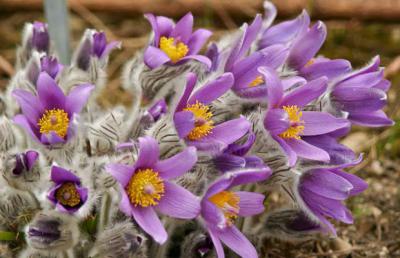
Part of the meadow lumbago, which is located above the ground, is used in the treatment of diseases of a gynecological and neurological nature, the digestive system, and the kidneys. Recommended during menstrual pause in women. It also helps with fungal infections, infectious rashes, in the treatment of wounds.
Plant species
In total, there are more than 30 species of this plant in nature. All plant varieties are similar in appearance to each other, the color and shape of the flowers, the density of the cannon can vary. At home, about 20 varieties of this plant are grown. The most popular are considered to be:
- common lumbago;
- spring lumbago;
- open lumbago;
- lumbago meadow or blackening;
- lumbago golden;
- lumbago white;
- Haller's lumbago.
Common lumbago or windflower is usually attributed to perennial plants, not exceeding 50 centimeters in height, The stem is straight, has a silvery fluff. It is often found, especially in Europe, the Caucasus, in the countries of Central Asia. It blooms in early spring.
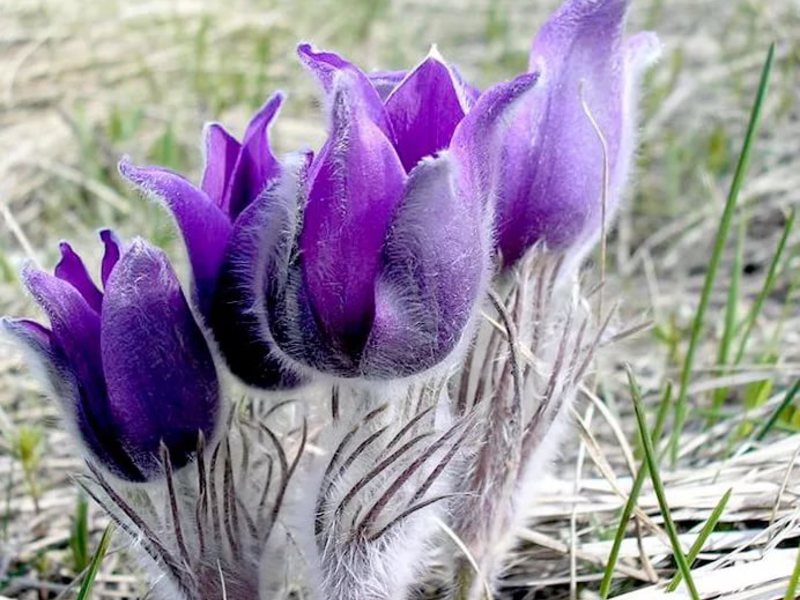
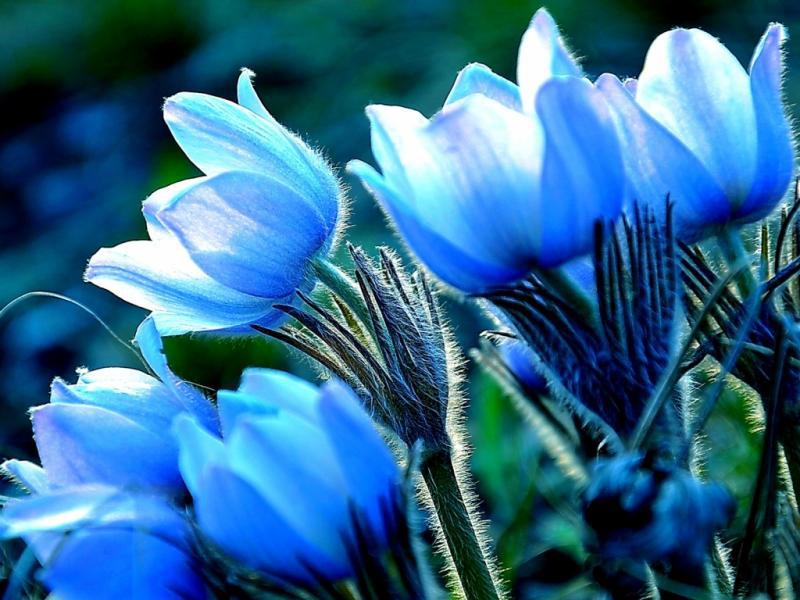
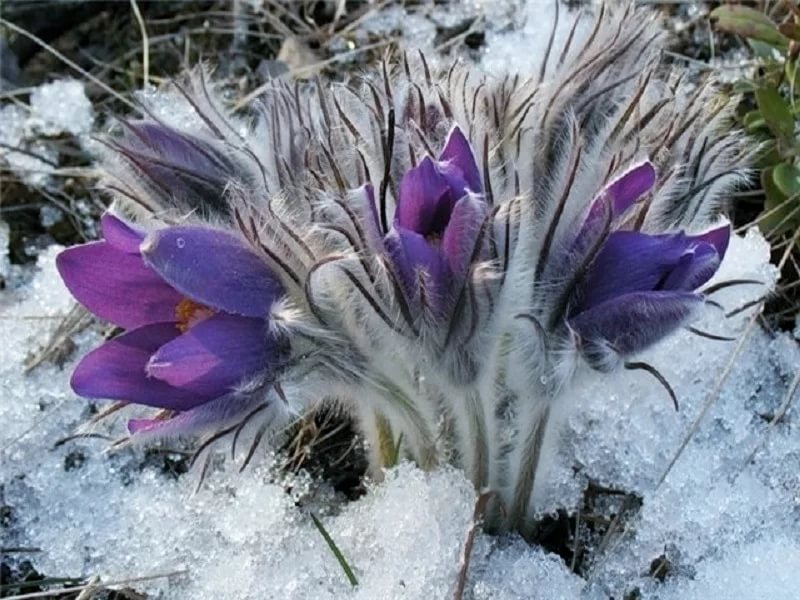
Based on this species, several varieties were bred:
- Alba (white flowers).
- Barton pink (pink flowers).
- Gotland (purple flowers).
- Ena Constance (dark red flowers).
- Rubra (purple flowers).
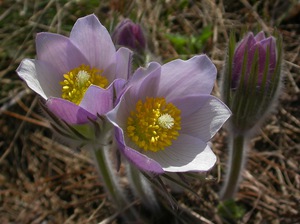 Spring lumbago belongs to the buttercup family. It is often mistaken for snowdrops. Often found in Russia, in the northeastern part of Europe, in Asia Minor. The height does not exceed 30 centimeters, the flowers are white-purple (the photo is a dream of the grass below). Flowering begins in May and lasts about 25 days.
Spring lumbago belongs to the buttercup family. It is often mistaken for snowdrops. Often found in Russia, in the northeastern part of Europe, in Asia Minor. The height does not exceed 30 centimeters, the flowers are white-purple (the photo is a dream of the grass below). Flowering begins in May and lasts about 25 days.
Open backache is most often found in the southern regions of Western Siberia, in some regions of Central and Western Europe.
The plant is about 35-50 centimeters high, a plant with a strong pubescent stem, bluish-purple flowers. Flowering begins in April and lasts about 25 days.
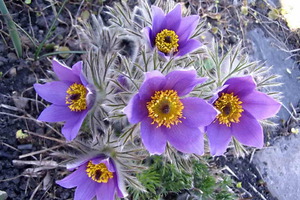
Lumbago meadow or blackening prefers to grow in pine forests and on sunny slopes. This plant can be found in the Leningrad region, the Urals and Siberia. A small plant (about 25-30 centimeters in height) has flowers from lavender to yellowish-green flowers (pictured). It begins to bloom at the very end of April, blooms for about 30 days.
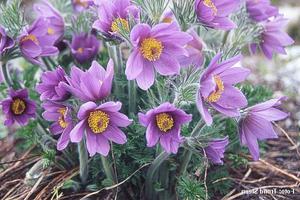
The Caucasus is considered to be the homeland of golden lumbago. Plant height does not exceed 35–45 centimeters, completely covered with silvery down. The flowers are well opened, have a yellowish-golden hue. It begins to bloom in June, blooms for about 25 days.

White lumbago can be found in the Alpine meadows. It looks like a white bell, with bluish blotches on the outside. Often grows with myrtle leaf rhododendron.
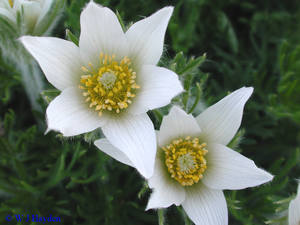
Haller's lumbago is considered to be a small herb, about 15–20 centimeters high. Often found in the Crimea and in some regions of Europe. Flowers are dark purple, bell-shaped. Flowering begins in April, lasts about 27-30 days, possibly re-flowering in autumn. Fruiting in the summer months, mainly in June-July.
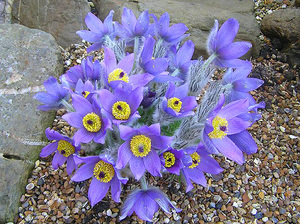
Sleep grass in everyday life
Previously, the juice of the herb was used by artists to dilute paints. It was believed that the paint diluted with the juice of the shot lasts longer on the canvas, does not fade and does not fade.
In veterinary medicine, many Asian countries are still drowsy - grass is used to cure an animal from glanders. In addition, small ruminants consume this plant in the spring. At the beginning of summer, shepherds are vigilant about the livestock, with the onset of summer, the plant becomes poisonous, it should not be eaten.
Planting and growing lumbago
Lumbago grows well in open, sunny places, on sandy, but rich, loose, sufficiently moist, but always drained soil. When planting, a distance of 30-50 cm is maintained between the plants.
In dry times, plants are watered and mulched with humus or peat. For the winter, lumbago (especially seedlings of the first year of life), despite their high winter hardiness, in case of snowless frosts, it is still better to cover it with spruce branches. In addition, plants need protection from winter moisture. Young plants can be attacked by slugs and snails. In one place, lumbago grows well and blooms for 6-10 years. Spring adonis (Adonis vernalis) can become a wonderful companion in the garden.
Shoots are propagated by seeds that retain their germination for three years, which are best sown in spring in a well-warmed soil (optimum germination temperature 20-25 ° C) or before winter. The seeds are shot with a long tuft. Having got wet in moist soil, the tuft twists like a small corkscrew and pulls the seed into the soil. With spring sowing, seedlings appear in 3-4 weeks. Seedlings must be shaded. Seedlings bloom in the second or third year.
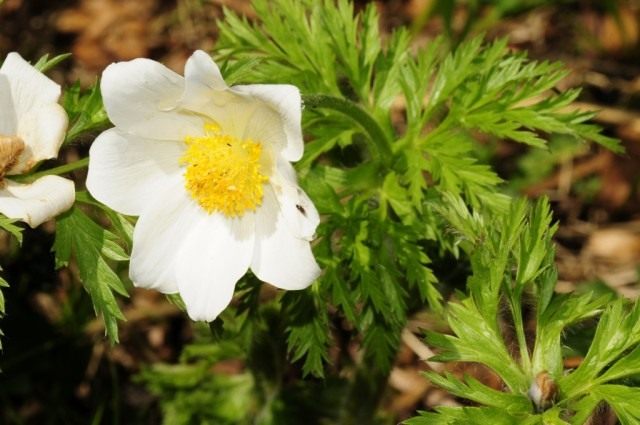 Alpine lumbago. Philipp weigell
Alpine lumbago. Philipp weigell
Plants obtained from seeds do not always match the color of the original variety. An adult plant does not tolerate transplanting very well, but if you nevertheless decide to transplant it, then this should be done at the end of August, trying to preserve as much soil as possible so as not to damage the fragile roots. Due to the fact that the lumbago takes root so poorly and is so rare, you should not transfer it to the garden from the edge of the forest, where you can still find it among the pines. Lumbago is also propagated by root cuttings in early spring.
The plant is excellent when cut. But picking flowers in nature is simply a criminal activity. "Decapitation" of flowers weakens the plant, leads to premature aging, deprives it of the opportunity to set seeds, and, consequently, give life to a new generation. In such a situation, the plant increases its population only due to growth, but it proceeds very slowly, and besides, its genetic renewal does not occur, which contributes to rapid degeneration.
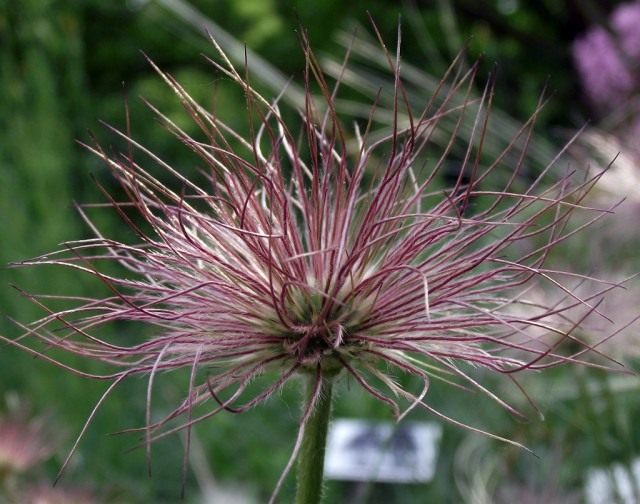 Seed head after flowering. Rillke
Seed head after flowering. Rillke
Lumbago ordinary landing and care
A few months after flowering, sleep grass seeds can already be sown. It is best to start growing a dream grass from seeds in March or April.
If possible, soak the seeds in succinic acid solution for a couple of hours. Sleep propagating grass by seeds, it is necessary to sow either in greenhouses or covered containers.
In lumbago, care and cultivation must be done carefully, the seeds must be spread out on the soil and pressed a little. For good shoots, it is necessary to provide an optimum temperature of up to 26 degrees and high humidity.
Planting in separate containers should be done when about three leaves appear on the plant. But while the plant is rooting after planting, the upper part of it develops poorly. In late summer, sleep grass seedlings can be planted outdoors in the garden.
If stored in the refrigerator, the seeds will last up to five years. But it happens that the seeds do not want to wake up, then it is necessary to do stratification.
The threat of extinction
Unfortunately, the future of this plant is in jeopardy at this time. Meadow lumbago is rare and special. "Red Book" - this is the document in which all endangered plants and animals are collected. On its pages you can see the grass we are considering. In the near future, this type of perennial plant may disappear, since people, despite contraindications, very often use its roots. After the destruction of the roots, the lumbago no longer grows, but people do not think about it.
If the meadow lumbago disappears in nature, humanity will lose a rare species of medicinal plant.
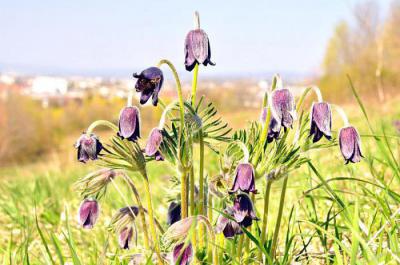
For those who are poorly versed in herbal treatment, it is better to consult a specialist. In addition to healing properties, if used improperly, the herb can harm health, especially meadow lumbago, which has a huge list of toxic substances in its composition.
The herb is known in China, Bulgaria and many other countries. A powder is made from meadow lumbago that can heal wounds and burns. Also, the plant is an excellent remedy in the fight against acne and other skin diseases (boils, acne, blackheads). The main thing is to use it according to the recommendations.It is advised to use the plant for people suffering from gout and often suffering from a rash with purulent acne.

The subtleties of growing from seeds
If you want to grow lumbago at home from seeds, you should consider some important rules.
- Experienced flower growers advise sowing only widespread varieties harvested in the fall, in March. It is advisable to use purchased soil and mix it in half with coarse sand.
- When planting seeds in a pot or other suitable container, do not sprinkle them with earth on top. They will ascend without problems only with good lighting.
- The air temperature must be at least +25 degrees Celsius (a little more is allowed).
- The percentage of air humidity should be high. It is permissible to leave seedlings in a greenhouse, or cover with pieces of glass.
- If you sow the seeds of the shot correctly, they will give the first shoots literally after 5-14 days.
- If the sprouted plantings did not manage to throw off the seed coats, they will need to be moistened several times a day using warm water.
- When the seedlings are at the stage of 2-3 leaves, they can be seated in separate containers (cups). In the first year of life, this culture is calm about transplants.
- If you plan to plant plants in the garden, then this should be done in May and immediately to their permanent place.
Reproduction lumbago
Despite the status of a perennial plant, the main method of reproduction of the lumbago is the seed method, typical for the summer. The thing is that lumbago very badly tolerate transplantation, it is impossible to separate them in an adult state and get new plants by vegetative methods. This has its own plus: the low digging efficiency allows the lumbago to better maintain representation in the wild, because there is simply no point in digging this plant from its natural habitats. Shootholes bloom not earlier than in the second year after sowing, and some species (all alpine and spring shoots) - only after 7 years.
The sowing strategy largely depends on the main characteristic of lumbago: plants that do not tolerate any transplants, even at a young age, are best sown directly at the growing site or, in extreme cases, on ridges with carrying at one year of age with a large clod of earth (resettlement can be done in early spring).
The timing of sowing seeds can also be different. Sowing is most effective immediately after the seeds are harvested from the plant, in June-July. But young seedlings will require more complex care in the hot summer, they will need to be shaded and watered often. Therefore, many gardeners choose other dates and sow the seeds harvested last year in the spring in well-heated soil. Underground crops are not effective for conventional shooting. And only high-altitude lumbago (alpine, mountain, Tatevaki and Tarao) prefer autumn sowing and stratification, but it is better to focus on the information of the seed supplier.
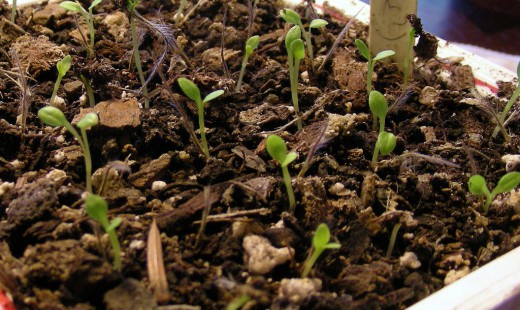
Seedlings shot through.
Sowing in the soil is carried out according to the standard technique. Seeds are scattered into small grooves about 1 cm deep with a distance of about 20 cm between rows. Crops should be dense and the soil should be light. Before germination, lumbago is provided with easy watering without waterlogging, maintaining constant soil moisture. Mulching with straw or hay will help stabilize conditions.
Growing seedlings involves sowing lumbago in April. The seeds are not buried, but only pressed into the substrate and moistened from above with a spray bottle. From above, the crops must be covered with foil or glass. Shoot seeds can germinate only in the light and at a temperature of about 24-27 degrees Celsius.Seedlings appear unevenly, not all seeds undergo the process of self-shedding of the shell, and for germination they sometimes require soaking with warm water. The pick is carried out in individual peat pots in the phase of 2-3 true leaves. In the soil, lumbago is transferred with them, in May or later.
Regardless of the method of cultivation, the lumbago will fully show their decorative effect only 3-4 years after sowing, although not mountain species will bloom in the second year.
Peculiarities
In terms of its popularity, lumbago is not inferior to luxurious roses, tulips or crocuses. Many gardeners decide to decorate their garden plots with these adorable plants. Sleep grass is one of the brightest representatives of horticultural crops. It is distinguished by spring flowering. The plant is hardy and charming. Lumbago is a spectacular perennial, belongs to the buttercup family. It can refer to primroses or snowdrops. Translated from Latin, the name of this flower means "wobble", "wiggle". This indicates plants swaying in the wind.
Analyzing the description of the appearance of these delicate and attractive plants, it is worth highlighting a number of main features. The lumbago is small. These are herbaceous perennials, which can reach a height of 5 to 40 cm. Despite such altitude parameters and small flower sizes, these crops do not "dissolve" on the site, but attract a lot of attention and look bright.
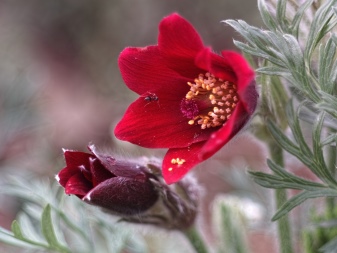

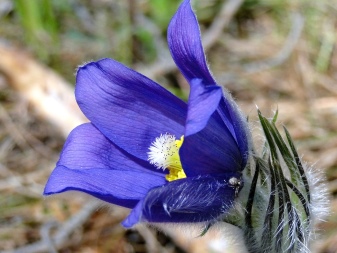
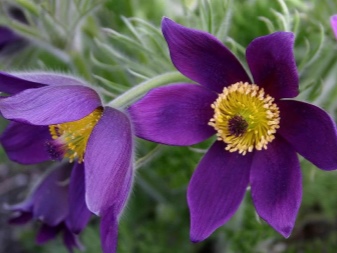
The dream herb has special roots. They grow either obliquely or vertically. The rhizomes are distinguished by an impressive length and lie deep. They are powerful, rod-like, distinguished by their large size and non-standard structure. For such a small and modest flower, the arrangement of rhizomes is unexpected. Shoots of the lumbago are practically straight. They are crowned with a flower, which is emphasized by narrowly dissected leaf blades that have grown together into an improvised blanket. The latter imitate the shape of the root leaves.
Dream-grass greens cannot be called too expressive, attracting attention. But curtains of different leaves will not stop serving as an adornment and addition to a live composition until the late autumn period.
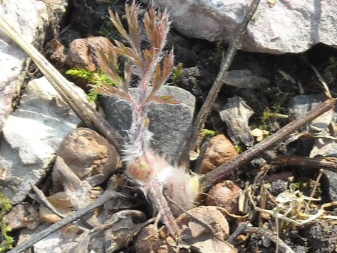
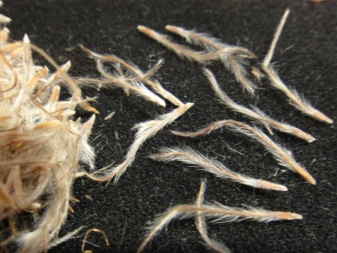
Basal leaf plates are characterized by modest sizes. They sit on elongated petioles in a rosette, which is far from being dense in all cases. The leaves can be pinnately dissected, finger-like or densely pubescent. Shoots can boast of another interesting feature - they are distinguished by elongation, elongation of shoots after the flowering stage, at the usual stage of fruit development. But the flowers are considered the real pride of these non-trivial plants. The buds can be large. It is they who act as the most decorative component of the plant.


By their structure, the flowers of the dream-grass resemble charming bells. In some subspecies, they are characterized by a cupped shape. They grow as solitary ones, their average diameter is 8 cm. The flowers have 6 well-pubescent petals on the outside. The colors of the buds can be different. Most often there are snow-white, lilac, yellow or red specimens.
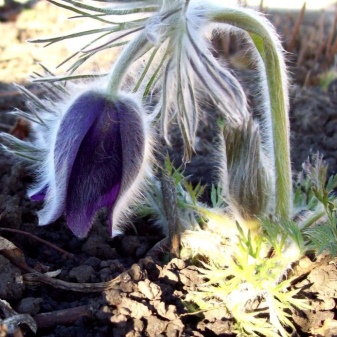
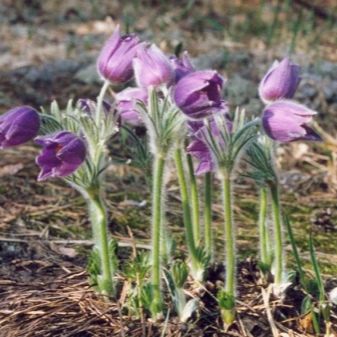
6 useful properties
Despite the fact that the flower has many useful properties, it should not be used uncontrollably - the plants are poisonous and contain toxins in their composition. In order to get rid of them, the green mass of the lumbago is dried in a suspended state or spread out in a small layer in a warm and ventilated room without access to the sun and then stored open. Such raw materials can be consumed only 3 - 6 months after collection.
It is better to collect it during the flowering period - it is at this time that the maximum concentration of nutrients in the composition is achieved.
Bushes are used in folk medicine as an anesthetic, sedative and sleep-improving agent (analogue of antidepressants). It is believed that the flower also has antimicrobial properties and is able to have an enveloping effect in diseases of the digestive tract. In diseases of the upper respiratory tract, sleep - the herb is used as an expectorant. Well relieves pain and relieves the condition of the plant in people suffering from rheumatism. For skin diseases - eczema or scabies, an infusion of lumbago is prepared and rubbed with the affected skin.
Drops containing lumbago extract are used to prevent eye diseases such as glaucoma and cataracts, as well as as a sedative.
Lumbago has also found its way into homeopathy.
Contraindications to the use of medicines based on this primrose are all kinds of allergic reactions and individual intolerance, pregnancy and breastfeeding, acute inflammatory processes in the body.
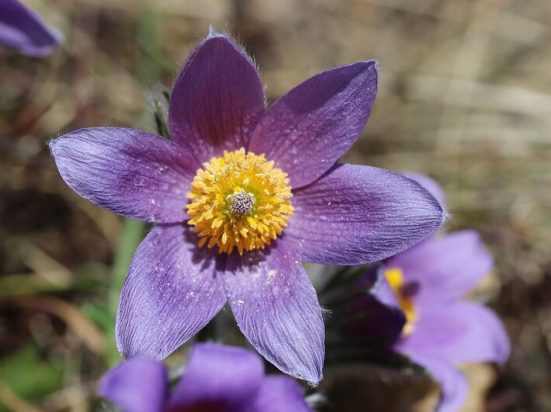
Useful and harmful properties
Sleep-herb, as a medicinal plant, has been known for a very long time and is actively used in folk medicine. Its scientific name is Pulsatilla patens.
Its medicinal properties are due to its chemical composition, which provides:
- antibacterial;
- antifungal;
- anesthetic;
- sedative;
- antispasmodic effect, hypnotic and hypotensive effect, slows down the heart rate and stimulates breathing.
Based on the medicinal properties of the plant, folk and official medicine recommends using it to treat:
- diseases of the genitourinary system;
- initial forms of hypertension;
- migraine;
- glaucoma;
- tachycardia;
- heart failure;
- dizziness;
- nervous and mental disorders;
- insomnia.
Sleep-herb, as a valuable medicinal raw material, is actively used in veterinary medicine and to create homeopathic medicines - Pulsatilla.
 Sleep-grass is a poisonous plant, therefore it must be applied in doses
Sleep-grass is a poisonous plant, therefore it must be applied in doses
Applying alcohol tinctures based on sleep-grass externally, it is possible to alleviate the condition with pain in the joints, rheumatism, osteochondrosis, radiculitis and neuralgia. External use of the infusion of lumbago in the form of lotions and baths is recommended for abscesses, wounds, furunculosis, abscesses, fungal diseases.
The use of drugs based on sleep-grass inside is prescribed for bronchitis, whooping cough, asthma, tuberculosis. Sleep-herb water infusion can be used in the treatment of the nervous system, renal colic, liver diseases, impotence in men, violation of the female menstrual cycle.
Attention! Sleep-herb is a medicinal, but poisonous plant, therefore, taking drugs based on it should be strictly dosed and last for a short time. It is strictly forbidden to use fresh lumbago inside, since it contains the toxic substance protoanemonin, which is destroyed during the drying process
The dried herb is ready for use after 3 months, after harvesting and drying.
Contraindicated drugs based on meadow lumbago:
- with gastritis;
- with neuritis;
- with inflammatory processes of the liver and kidneys;
- during pregnancy.
5. Reproduction
5.1 Growing from seeds
For seed reproduction, planting material collected with oneself from plants planted in the garden... It is worth remembering that varietal plants with a similar method of reproduction often do not correspond to the characteristics of the parent bushes and can be strikingly different from them.
Germination rates vary from species to species, but usually remain high for 2 to 3 years after harvest.
Some varieties are sterile and do not produce seeds even when pollinated.
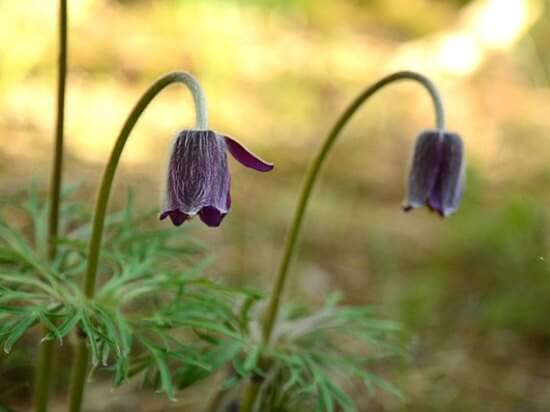
After flowering, it is worth waiting for the formation of fluffy heads with seeds and timely cover them with gauze so that the seeds do not fly away with gusts of wind.Planting material ripens 4 - 5 weeks after flowering. After complete ripening, the seed heads are separated from the lumbago bushes and the seeds are selected, which are then dried in a warm and well-ventilated place. After drying, the planting material is placed in storage, poured into fabric or paper bags.
Planting in seedling boxes is carried out in early spring - in March. A drainage layer in the form of expanded clay, clay shards or brick fragments is laid at the bottom of the boxes or individual pots. The containers are filled with slightly moist, nutritious and friable substrate, mixed in equal parts with river sand.
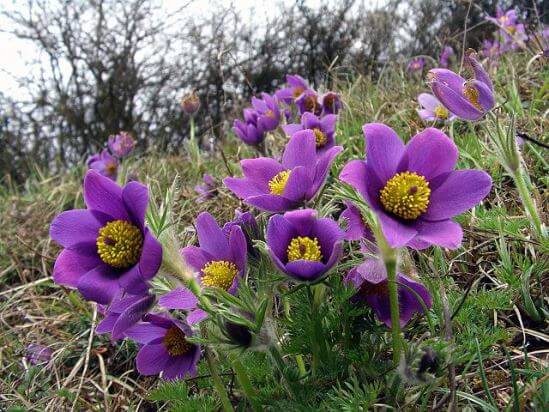
Plain varieties can be sprinkled on top with a small layer of soil. Seeds of alpine species sleep - grasses for germination require preliminary cool stratification and light - they should not be covered with earth from above - it is enough to simply press them into the soil surface.
Mountain lumbago is difficult to grow in garden plots, so it is advisable to opt for plants that live at low altitudes.
The main difficulty in growing lumbago from seeds is maintaining a high air temperature. In order for the seeds to successfully sprout, it must be 25 - 27 degrees.
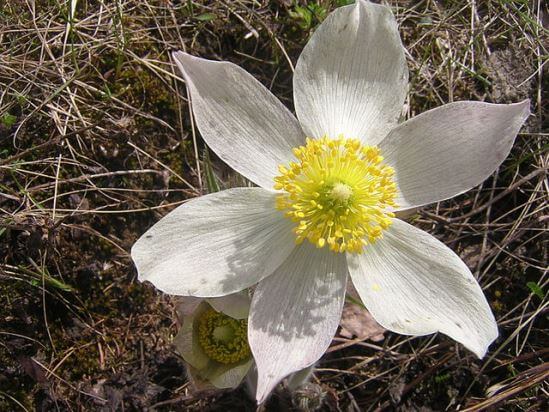
From above, the seedlings are covered with plastic wrap or a transparent plastic cover to create a greenhouse effect and maintain high humidity.
Subject to the rules of agricultural technology, the first shoots can be seen within 1 - 2 weeks. Sometimes the husks of seeds remain on the tops of small plants - they are sprayed daily with water and sometimes gently removed with tweezers.
Every day the plants are ventilated by removing the hood and increasing the ventilation time.
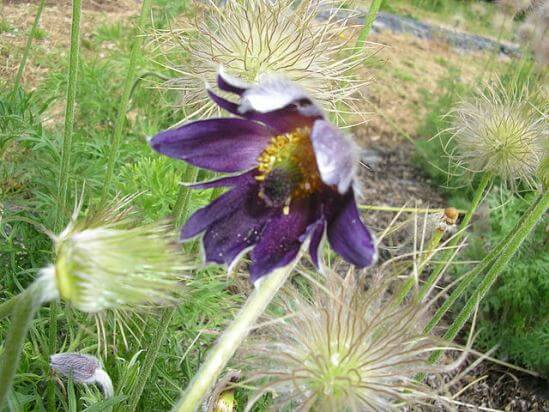
With the formation of 2 - 3 true fervent plates, flowers grown in a seedling box can be dived into separate cups. Of course, it is advisable to transfer the flowers along with the root ball. Another 7 - 10 days after the dive, you can feed the bush for the first time with a weak solution of nitrogen fertilizers.
Sleep seedlings in open ground - herbs are planted in summer - in July or in the first half of August.
You can sow seeds directly into open ground. It is best to do this in the spring, when the threat of the last night frost has passed - for example, in May.
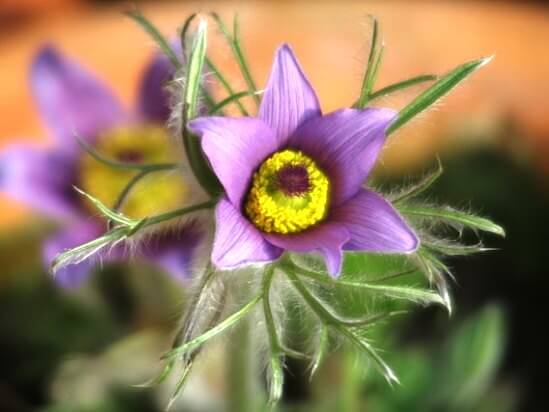
For bushes growing high in the mountains in their natural habitat, it is better to arrange a subwinter sowing - with this method of growing, the plants will undergo natural cool stratification. These varieties include alpine, mountain lumbago and Tatevaki.
For sowing, prepare small grooves with a depth of about 1 cm, maintaining a distance of about 10 cm between them. After sowing, the soil is thoroughly moistened and kept constantly moist, but not waterlogged.
For seed reproduction, a florist should be patient, because the first buds will decorate plants grown from seeds for at least the second year of development, and in some varieties this period can increase to 7 years.
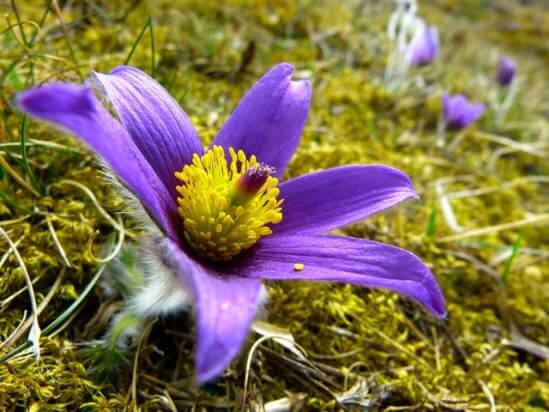
5.2 Splitting the shot
Unfortunately, lumbago does not like even simple transplants, and most likely will not tolerate division at all. The fact is that the taproot of a flower and its damage will cause the death of plants.
Common types
Spring lumbago is one of the most charming representatives of culture. This perennial of extraordinary beauty is characterized by compactness and the ability of the ground green part of the plant to endure winter, that is, not to die off. The flowers are light purple with a pearlescent shine and bloom together. Adult bushes can reach a diameter of 30-40 centimeters.
Yellowing lumbago has a bright color of inflorescences
Bright yellow flower petals with bluish blotches from the outside attract attention with their decorative appearance. The height of the bush barely reaches 20 centimeters
The flowering period varies from early April to June.

The Chinese species has bluish purple or dark purple flowers. This plant grows to a height of 5 to 25 centimeters, depending on growing conditions. Outside, the petals are covered with a dense layer of hairs, and from the inside they are smooth with a bright yellow core of many stamens and pistils. Full disclosure of buds is not characteristic of this species. Flowers at the peak of decorativeness remain collected, similar to a bell. Blooms from March to early June.
Kostychev's lumbago blooms late enough. In nature, perennial prefers rocky slopes and stony soils. Has a pink color of inflorescences. It reaches a height of only 15 centimeters. Flowers of unusual color are quite large in size. Under favorable conditions, they are able to develop up to 6 centimeters in diameter. Pink dream-grass blooms in June.
The meadow species is perhaps one of the largest species of this genus. In height, the plant develops up to 35 centimeters. Depending on the variety, the flowers can be lavender, reddish, violet-black and deep purple. Blooms from late April to early June.
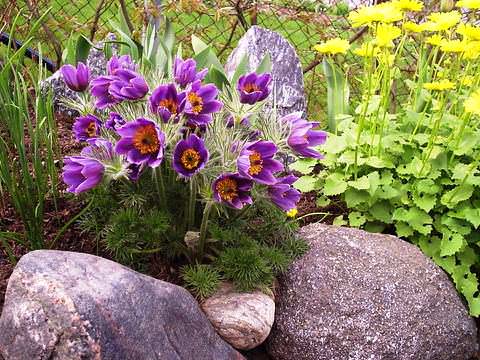
Common lumbago is known for a wide variety of varieties. It is this species that is characterized by terry inflorescences with different colors. In height, the plant can develop up to 30 centimeters, and in width the bush can reach half a meter. Most often, the flowers bloom before the leaves appear. Unlike many species, ordinary lumbago is also decorative at the time of fruit formation. A round, multi-hairy fruit forms on each peduncle after flowering is complete.

